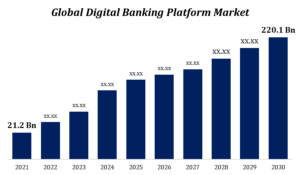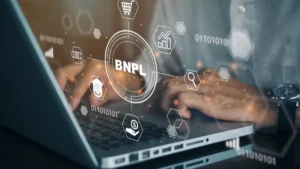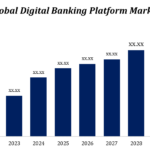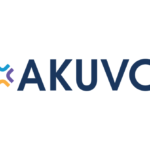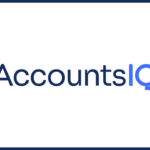The Impact of IoT on Financial Services
The Internet of Things (IoT) refers to the network of interconnected devices that communicate and share data through the internet. From smart home devices to wearable technology, IoT has become an integral part of modern life, influencing various industries, including financial services. In the financial sector, IoT is driving innovation and transforming how institutions operate, manage risk, and interact with customers. This blog explores the impact of IoT on financial services, highlighting key applications, benefits, and potential challenges.
Understanding IoT in Financial Services
IoT in financial services involves integrating connected devices and sensors with financial systems and processes. These devices collect and transmit data that can be analyzed to improve decision-making, enhance customer experiences, and optimize operations. The application of IoT technology in finance extends from risk management and fraud detection to personalized services and operational efficiency.
Key Applications of IoT in Financial Services
1. Enhanced Risk Management
Description: IoT devices provide real-time data that can be used to assess and manage various types of risk, including operational, market, and credit risk.
Applications:
- Insurance: IoT sensors in vehicles and homes can monitor usage and conditions, enabling insurers to offer usage-based insurance policies and dynamically adjust premiums based on real-time data.
- Operational Risk: Financial institutions use IoT to monitor critical infrastructure and detect potential issues before they escalate, reducing downtime and operational risk.
Example: An insurance company uses telematics data from connected cars to assess driving behavior and adjust premiums based on individual risk profiles.
Benefits:
- Proactive Risk Management: Real-time data allows for proactive risk assessment and mitigation.
- Customized Insurance: Usage-based policies offer fairer pricing based on actual risk.
2. Fraud Detection and Prevention
Description: IoT devices can enhance fraud detection by providing additional layers of data and context that help identify suspicious activities.
Applications:
- Transaction Monitoring: IoT-enabled devices can track transaction patterns and flag anomalies that may indicate fraudulent activity.
- Identity Verification: Biometric devices, such as facial recognition or fingerprint scanners, improve identity verification processes and reduce the risk of identity theft.
Example: A bank uses IoT-based sensors and biometric authentication to verify user identities and detect unusual transaction patterns.
Benefits:
- Improved Accuracy: Enhanced data and biometric verification reduce false positives and improve fraud detection accuracy.
- Real-Time Alerts: IoT devices enable real-time monitoring and alerts for suspicious activities.
3. Personalized Financial Services
Description: IoT enables financial institutions to offer personalized services by leveraging data from connected devices to tailor products and interactions.
Applications:
- Personal Finance Management: Wearable devices and smart home systems provide data on spending patterns and financial behavior, allowing for personalized financial advice and budgeting recommendations.
- Tailored Offers: Banks and financial services can use IoT data to deliver targeted offers and promotions based on user preferences and behaviors.
Example: A financial app integrates with a user’s smart home system to provide personalized budgeting advice based on their utility usage and spending patterns.
Benefits:
- Enhanced Customer Experience: Personalized recommendations and services improve customer satisfaction and engagement.
- Data-Driven Insights: IoT data provides valuable insights for creating tailored financial products.
4. Operational Efficiency
Description: IoT technology helps financial institutions optimize their operations by automating processes and improving resource management.
Applications:
- Asset Management: IoT sensors track the condition and usage of physical assets, such as ATMs and branch equipment, ensuring optimal performance and maintenance.
- Process Automation: IoT devices automate routine tasks, such as data collection and reporting, reducing manual effort and increasing efficiency.
Example: A bank uses IoT sensors to monitor the performance of ATMs, ensuring timely maintenance and reducing downtime.
Benefits:
- Cost Savings: Automation and optimized asset management reduce operational costs.
- Improved Service Levels: Enhanced monitoring and maintenance improve service reliability and customer satisfaction.
5. Enhanced Customer Engagement
Description: IoT enhances customer engagement by providing financial institutions with additional touchpoints and communication channels.
Applications:
- Interactive Banking: Smart devices and wearables offer new ways for customers to interact with their financial institutions, such as through voice-activated banking or real-time notifications.
- Customer Insights: IoT data provides insights into customer behavior and preferences, allowing for more targeted and effective engagement strategies.
Example: A bank offers a mobile app that integrates with wearable devices to provide real-time notifications and financial insights based on user activity.
Benefits:
- Increased Engagement: Innovative interaction methods and real-time updates enhance customer engagement.
- Personalized Communication: IoT data enables more relevant and personalized communication with customers.
Challenges and Considerations
1. Data Privacy and Security
Description: The integration of IoT devices raises concerns about data privacy and security, as sensitive financial information is transmitted and stored.
Challenges:
- Data Breaches: IoT devices can be vulnerable to hacking and data breaches, potentially exposing sensitive information.
- Compliance: Financial institutions must ensure that IoT implementations comply with data protection regulations and standards.
Consideration: Implementing robust security measures, such as encryption and access controls, is essential for protecting data and maintaining compliance.
2. Integration and Interoperability
Description: Integrating IoT devices with existing financial systems and ensuring interoperability can be complex and challenging.
Challenges:
- System Compatibility: Ensuring that IoT devices and financial systems can seamlessly integrate requires careful planning and technical expertise.
- Standardization: Lack of standardization among IoT devices can create compatibility issues and hinder effective integration.
Consideration: Financial institutions should prioritize interoperability and work with technology providers to ensure seamless integration.
3. Data Management and Analysis
Description: Managing and analyzing the large volumes of data generated by IoT devices can be overwhelming and require significant resources.
Challenges:
- Data Overload: Handling and analyzing vast amounts of data from multiple sources requires advanced analytics and data management capabilities.
- Data Quality: Ensuring the accuracy and reliability of data collected from IoT devices is crucial for making informed decisions.
Consideration: Investing in data analytics tools and platforms can help manage and extract valuable insights from IoT data.
The Future Outlook
The impact of IoT on financial services is set to grow as technology continues to evolve. Key trends to watch include:
1. Expansion of IoT Applications
Description: IoT applications in financial services are expected to expand, with new use cases and innovations emerging.
Trend: Financial institutions will explore new ways to leverage IoT for enhanced risk management, personalized services, and operational efficiency.
2. Advancements in IoT Security
Description: As IoT adoption increases, there will be a focus on improving security measures to protect against data breaches and cyber threats.
Trend: Advances in IoT security technologies, such as encryption and authentication, will enhance data protection and privacy.
3. Increased Regulatory Focus
Description: Regulators will likely introduce new guidelines and standards for IoT use in financial services to address privacy, security, and data management concerns.
Trend: Financial institutions will need to stay informed about regulatory developments and ensure compliance with evolving standards.

